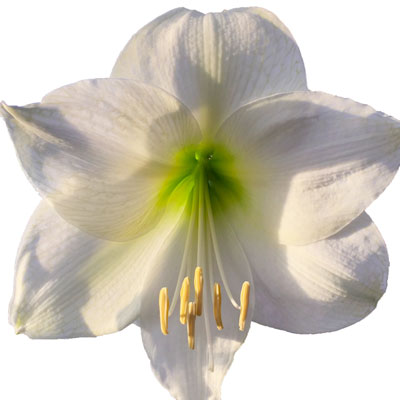Amaryllis, or Isn’t It?
I thought this was going to be a quick and easy little post designed to help you know the difference between the bulbs you buy at nurseries and flower shops in December and the garden perennials that bloom in late March and April in Texas landscapes, and how to care for each of them.
What I found online overwhelmed me. I’ve found that there are scores of species and hundreds of varieties of plants in this clan. I’m still going to keep it brief, so let’s head to the bullets:
• These are in the Amaryllis plant family (Amaryllidaceae).
• One genus (Hippeastrum) brings us these common types. Most of the plants in that genus are native to the Caribbean, Mexico and South America.
• The plants develop from very large bulbs. Those bulbs are storage organs for moisture, and they allow the plants to survive periods of drought in their native homes.
• Tropical types The showy tropical amaryllis you see in stores around Christmas will tolerate some freezing weather, but they’re not reliably hardy in North Texas winters unless they’re grown in very protected locations.

Tropical amaryllis has been in my greenhouse since our grandson gave it to his mom for Christmas 2014. Photo was taken just a few days ago.

One of the scores of hybrids of tropical amaryllis, as photographed at Calloways in December. Tropical amaryllis flowers have petals and sepals that overlap. Compare this tropical’s flower to those of “hardy” amaryllis, St. Joseph’s lily.
• Hardy amaryllis We grow these outdoors here in Texas. They are a couple of Hardiness Zones more winter-hardy. They’re also referred to as “St. Joseph’s lily,” and they are Hippeastrum x johnsonii. They’re attractive, both in and out of flower, but you’ll rarely see them offered for sale. Your best bet is to get a start from a friend who has them to share. A clump can be lifted and very easily broken apart with just your hands. They can be divided immediately after they finish blooming in spring or in late September.

Hardy amaryllis (I’m trying to call it “St. Joseph’s lily” all the time now.) was given to me as one healthy clump 20 years ago. I now have several hundred plants.)
• St. Joseph’s lilies have narrower petals and sepals, and the flowers tend to stay slightly more tubular. By comparison, the tropical amaryllis varieties bear much flatter flowers with extremely wide and overlapping petals and sepals.
• Use those petal widths as your guide. If you see an amaryllis with extra-wide petals for sale in a garden center, and if they’re claiming it’s winter-hardy even in North Texas – it probably isn’t. South Texas? Yep. It probably will be. And the boundary where that changes will be very indefinite and variable from one winter to the next.
• All of these need nearly full sun to grow and bloom to their best potential. Prepare the soil 10 or 12 inches deep, mixing in several inches of organic matter and 1 inch of expanded shale.
• Keep amaryllis moist and well mulched at all times. They will be dormant in winter, and they will quit growing in summer.
Click to see this! You won’t believe it! All about this great group of plants. Just take a gander! (It’s from the Pacific Bulb Society. We typically don’t see this wide assortment in Texas.)

It’s from this website that I confirmed that this gifted plant is actually Hippeastrum vittatum.
As for the more tropical types, here is a page from the United States National Arboretum on how to get your Christmas amaryllis to rebloom every year.
